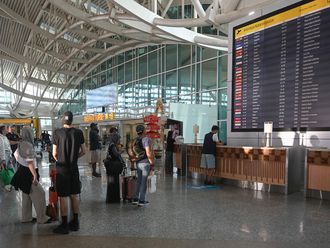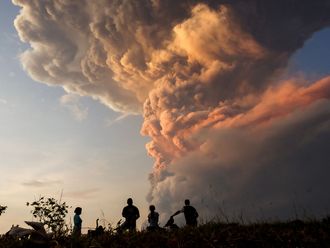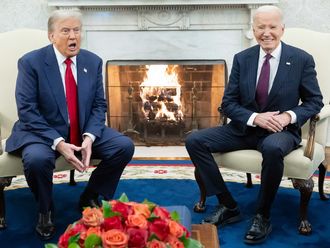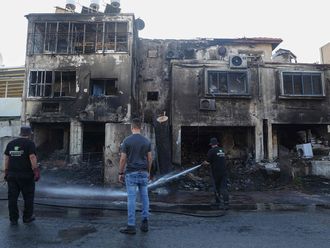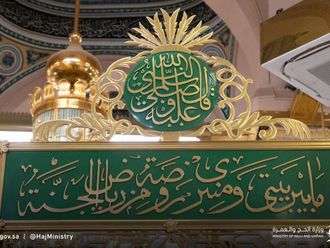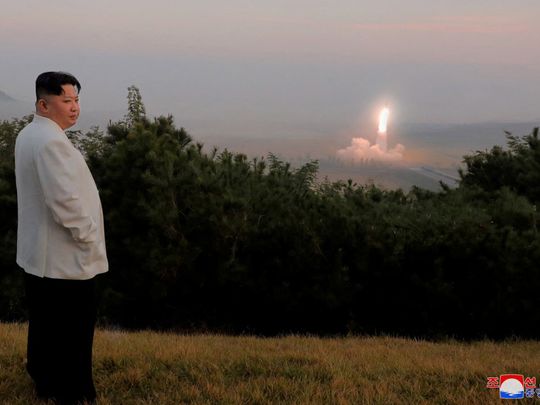
SEOUL, South Korea: North Korea’s barrage of missile tests, including Wednesday’s record of at least 23 launches, is raising an important question about its weapons programme: How does the impoverished country pay for the seemingly endless tests?
While some experts say each North Korean launch could cost $2 million to $10 million, others say there is no way to estimate accurately given the North’s extremely secretive nature. They say North Korea likely manufactures weapons at a much cheaper cost than other countries because of free labour.
Here is a look at the financial dimensions of North Korea’s missile tests.
HOW MUCH DOES EACH TEST COST?
North Korea launched at least 23 missiles on Wednesday and six more on Thursday, adding to its already record-breaking pace of weapons tests this year. Many were nuclear-capable ballistic missiles designed to destroy South Korean and US targets.
They likely include a developmental Hwasong-17 intercontinental ballistic missile, surface-to-air missiles and a variety of short-range ballistic missiles. North Korea has a reputation for frequent missile tests, but it has never launched that many missiles in a single day.
Soo Kim, a security analyst at the California-based RAND Corporation, said the cost of a North Korean missile test could range between several million dollars to $10 million, which would be lower than similar tests in other countries, partly because North Korean labour is cheap.
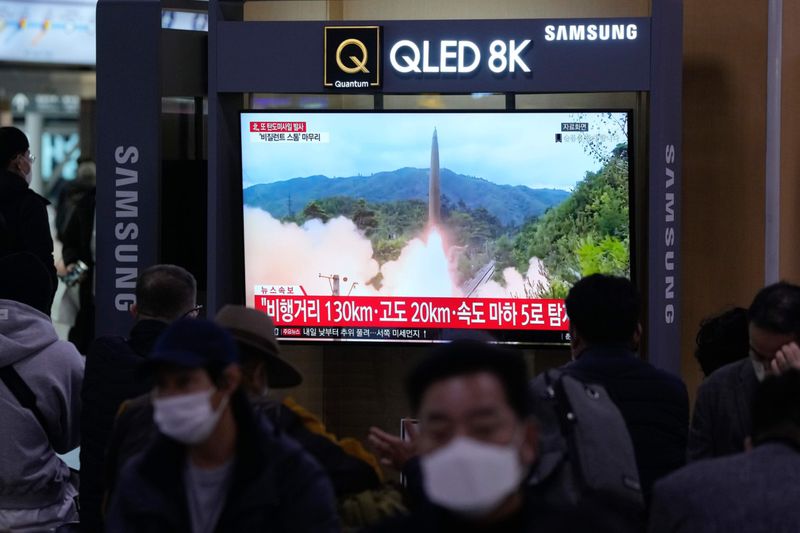
Bruce Bennet, another expert at the RAND Corporation, told Radio Free Asia that the short-range missiles Wednesday cost between $2 million to $3 million each and the total cost for the day was somewhere between $50 million and $75 million. RFA said the maximum estimate is about the amount of money that North Korea spent to import rice from China in 2019 to cover grain shortages that year.
Lee Illwoo, an expert with the Korea Defence Network in South Korea, said it’s impossible for outsiders to accurately estimate weapons production costs in North Korea. “There are no ways for us to find at what cost North Korea produces certain weapons parts. They could have manufactured them by themselves, or China might have given them for free or at an extremely cheap price,’’ he said.
In a report to the office of South Korean lawmaker Shin Won-sik in September, the state-run Korea Institute for Defence Analyses in Seoul said North Korea was estimated to have spent up to $1.6 billion on its nuclear program since the 1970s. The report used analyses of nuclear development programs in other countries. Some observers cautioned against the use of foreign data because the North Korean government doesn’t have to pay for labour or land.
HOW ARE THE LAUNCHES FUNDED?
North Korea’s economic difficulties have worsened because of COVID-19, but there have been no reports of substantial social unrest or food shortages.
Its weapons development is being driven by a Soviet-style party-military complex in which the party leadership surrounding Kim Jong Un exercises full control over defence industries and faces little budgetary constraint in concentrating national resources on arms development, said Hong Min, an analyst at Seoul’s Korea Institute for National Unification.
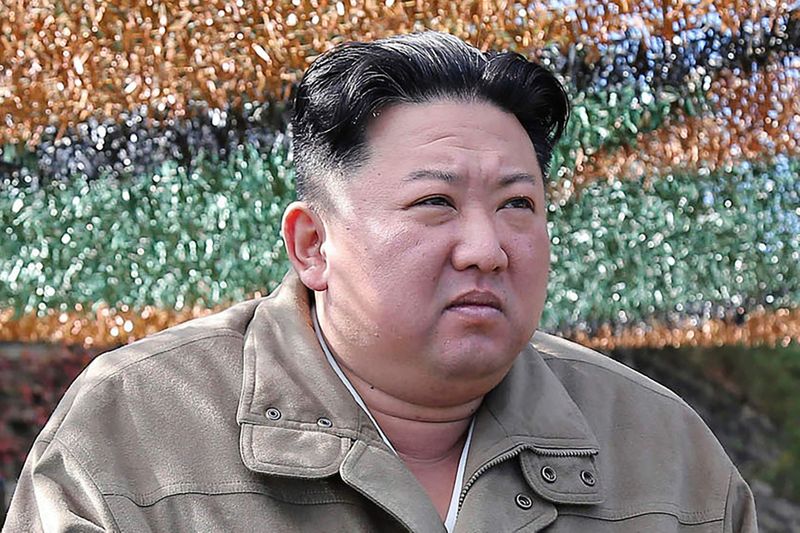
In addition to the record number of missile tests this year, there are also signs that North Korea is expanding its munition facilities in a possible attempt to mass-produce newly developed weapons, Hong said.
Soo Kim, the RAND Corporation analyst, said it is crucial to track how North Korea is financing its weapons programs despite US-led economic sanctions and its own self-imposed isolation.
“This is where sanctions-violating activities, including (North Korea’s) recent foray into cybercrime and cryptocurrency hacking, comes into play,’’ she said.
WHAT DOES NORTH KOREA GAIN?
Each of North Korea’s missile and nuclear tests gives its scientists “precious data’’ on weapons development and also helps cement Kim Jong Un’s leadership while rattling the South Korea-US alliance, said Kim Taewoo, former head of Seoul’s Korea Institute for National Unification.
“Some people say we should let North Korea keep firing missiles toward the sea so that they would use up their resources. But I would say that is an extremely naive opinion,’’ he said.
South Korean media reported that the Hwasong-17 launch on Thursday ended in failure because it didn’t follow a normal flight and crashed into the ocean after a stage separation. In an earlier test launch in March, the Hwasong-17 exploded soon after liftoff.
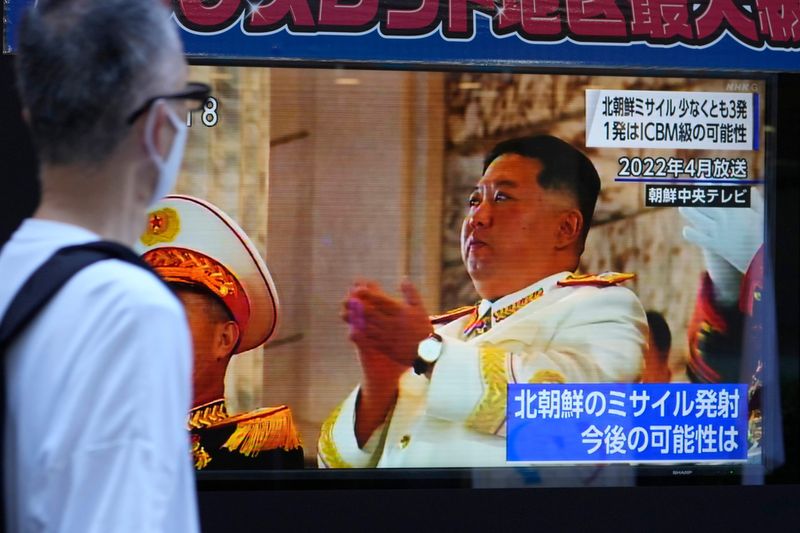
“The missile is under development. So it’s not the time to call its launch `a failure’ and laugh at it,’’ said Lee, the Korea Defence Network expert. “This time, the missile had a stage separation, and I think they’ve achieved quite a big technological progress.’’
North Korea has argued its missile tests are meant as a warning against a series of US-South Korean joint military exercises that it views as an invasion rehearsal. Given that, North Korea’s testing activities are likely to continue since Washington and Seoul regularly conduct drills.
North Korea is estimated to have about 1,000 ballistic missiles, more than enough for it to continue its pressure campaign through the 2024 US presidential election to try to win sanctions relief and other concessions, said Go Myong-hyun, an analyst at Seoul’s Asan Institute for Policy Studies.
“What North Korea wants to demonstrate before 2024 is that its nuclear weapons arsenal is very advanced, has been completed and represents a much more significant threat than before,’’ Go said. “It’s crucial for them to maintain that threat perception with the United States and they aren’t suddenly going to quiet down.’’


